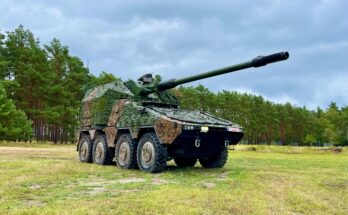by Richard Pettibone, Aerospace & Defense Companies Analyst, Forecast International.
For the third year running, Airbus won the orders race, picking up 1,080 new orders compared to Boeing’s 768. However, Boeing continues to outpace Airbus in terms of production, delivering 762 aircraft during the year, compared to Airbus’ 635.
Perhaps most telling of these tallies is that it appears the torrent of deals of the past few years has abated. The boom of the past four years was driven in large part by high fuel costs; hence sales of both Airbus’ NEO and Boeing’s MAX aircraft skyrocketed as airlines sought to replace older aircraft. Now that crude oil prices have collapsed, some airlines are deferring replacement of older aircraft. This softening is to be expected, as the wild order ride could only last for so long.
Now, both firms are concentrating on delivering on the tremendous backlogs they have accumulated. As a result, Airbus brought several new factories on line, most recently
opening a U.S. facility in Mobile, Alabama. The U.S. plant, which assembles the A319s, A320s and A321s, is expected to roll out its first A321 in 2016. The facility joins three other A320-series assembly facilities – at Toulouse, Hamburg, and Tianjin.
As it looks to close its production gap, Airbus is continuing to ramp up production. The company plans to push A320 rates to 50 a month by 2017, up from around 46 in 2016. With a backlog of some 4,300 NEOs, the company could likely even increase the rate to 60 aircraft around 2019.
Previously, concerns over suppliers kept Airbus from speeding up the line even though the large backlog could support the rate. Now, Airbus feels confident that its supply chain will be able to keep pace with increased production.
The vulnerability here is what the global economy will do. Should it take a slide from its current shaky recovery, or, heaven forbid, should a 2008-like downturn occur, these plans could be a costly overreach for the company. So far, though, Airbus feels it has read the tea leaves correctly and has confidence in its suppliers and customers to weather any trouble.
In addition to upping capacity, Airbus is also keen on keeping pricing under control. To this end, Airbus is spreading out its manufacturing operations to take advantage of lower-cost regions outside Europe. The A320 is produced at two factories in Europe, one in China, and a fourth now in the U.S. Although final assembly only accounts for a small percentage of the work that goes into an aircraft, the Mobile foothold is aimed at lowering costs over the longer term. Initially, the company will be able to take advantage of lower labor costs in the American South. The choice of a union-hostile state means lower overhead as compared to its unionized operations in France and Germany. Boeing made a similar move with its new facility for the 787 in South Carolina. The lack of a union will give the company much greater flexibility in maintaining its workforce – when the aerospace cycle eventually shifts downward, it will be much easier to lay off American workers than European workers. Furthermore, Airbus could use the addition of a non-union American workforce as a tool to keep its European unions in check.
As a marketing tool, the company can now tout “Made in America” in sales campaigns to U.S. customers. Longer term, the addition of an American plant could give Airbus and its parent company, Airbus Group, a better chance at obtaining contracts for future U.S. defense procurements, as they are no doubt still smarting from winning and then losing (in recompetition) the U.S. KC-X tanker program.
All told, Airbus’ management has its work cut out for it. The expansion into America, economic woes in Europe, and the ramp-up of several major programs will need to be managed carefully. So far, the company appears to be hitting all the right marks.
The focus of Forecast International’s Defense & Aerospace Companies series is on worldwide aerospace and defense prime contractors and subcontractors. Concise reports provide data on individual corporations regarding recent mergers, restructurings, and joint ventures. Also included in each report are financial and industrial segment data, snapshot coverage of major programs, and recent U.S. DoD contracts.
For 50 years, Forecast International intelligence reports have been the aerospace and defense industry standard for accurate research, analysis, and projections. Our experienced analysts compile, evaluate, and present accurate data for decision makers. FI's market research reports offer concise analysis of individual programs and identify market opportunities. Each report includes a program overview, detailed statistics, recent developments and a competitive analysis, culminating in production forecasts spanning 10 or 15 years. Let our market intelligence reports be a key part of reducing uncertainties and mastering your specific market and its growth potential. Find out more at www.forecastinternational.com




